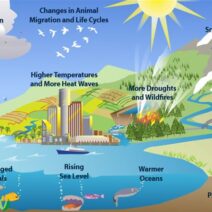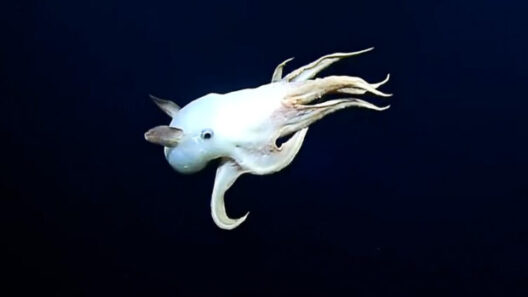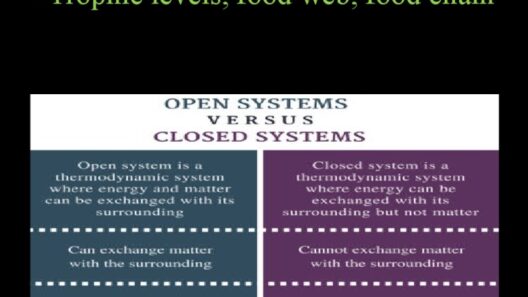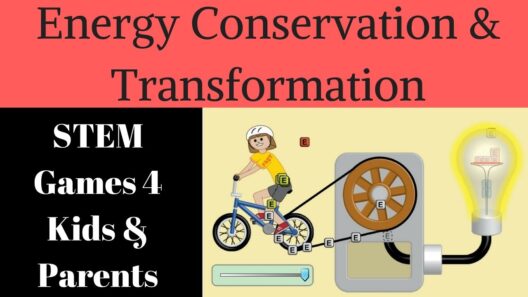The principle of conservation of energy is a foundational concept in physics, often encapsulated in the assertion that energy cannot be created or destroyed, only transformed from one form to another. Understanding this principle begins with visualizing energy as a dynamic, albeit finite, currency circulating through various systems. Just as water cycles through nature—raining down, soaking into the earth, evaporating into the clouds, and returning as precipitation—energy perpetually transitions between kinetic and potential states, illustrating a captivating dance that sustains the universe.
Energy exists in multiple forms, including thermal, kinetic, potential, chemical, and electrical. While these may seem distinct, they are interwoven through this principle. Consider thermal energy, often regarded as a chaotic dispersal of particles moving at different speeds. This energy can be adeptly converted into kinetic energy, which powers a moving vehicle or propels a ball through the air. Conversely, potential energy is stored energy waiting to be unleashed, such as within a drawn bow, poised to unleash its stored force once the arrow is released.
At the heart of the conservation principle is the idea of equilibrium. Imagine a perfectly maintained balance beam. On one side lies potential energy, like the haunches of a poised lion, ready to spring into action. On the other lies kinetic energy, akin to that lion in mid-pounce, released into the fray. The total energy—a constant entity—remains fixed, akin to the sum of weights on either side of the beam. When one form of energy increases, the other must decrease correspondingly, ensuring that the total remains unchanged.
This principle has far-reaching implications, particularly in the realm of environmental conservation. The understanding that energy transformations impact ecological systems encompasses everything from the efficiency of renewable energy sources to the sustainability of natural resources. The sun’s rays exemplify this beautifully. They shed light and warmth upon the Earth, facilitating photosynthesis in plants—transforming solar energy into chemical energy stored within biomass. This energy fuels not only the very foundations of biodiversity but also supports human life, underscoring a crucial linkage between energy conservation and environmental stewardship.
Humanity’s insatiable appetite for energy has often led to profound environmental challenges. Fossil fuels, while an efficient means of immediate energy generation, can be likened to an irreversible bank withdrawal. Extracting and burning fossil fuels releases vast amounts of stored carbon—a high-interest loan with ecological debt that future generations will have to repay. The conservation principle highlights the urgency and importance of transitioning to renewable energy sources, such as wind, solar, and hydroelectric power, which, while still requiring transformation, promise an inexhaustible supply and a reduction in ecological footprints.
Equally compelling is the significance of energy conservation in daily life. The idea is not merely about energy generation but also about minimizing waste. Just as a gardener must nurture and conserve resources to cultivate a vibrant garden, individuals and communities bear the responsibility to conserve energy to foster sustainable living. Simple actions—like turning off idle lights, using efficient appliances, and utilizing public transport—epitomize this ethos. These choices reflect a collective commitment to sustain what is already present, ensuring the preservation of energy resources for generations to come.
The intriguing metaphor of energy as a wave—a ripple spreading through various mediums—can help encapsulate its complexities. On a grand scale, the wave represents the energy flow in ecosystems, industries, and human activity. Each oscillation embodies a moment of transformation, a pause before the energy shifts into another form, demonstrating the interconnectedness of actions taken. Surges in one area—whether through technological advancements or conservation efforts—can create not only localized but global impacts. Where energy is conserved, harmony is fostered, flourishing ecosystems develop, and human innovation can thrive without depleting the vital resources that sustain life.
Investigating the energy conservation principle also unveils the necessity of scientific inquiry and technological innovation. Current challenges—like climate change and resource depletion—demand interdisciplinary approaches that fuse physics, environmental science, and emerging technologies. Innovations, such as energy storage systems and improvements in energy efficiency, epitomize our capacity to adapt and evolve. The creative application of the conservation principle drives research into new methods that enable increased efficiency in energy usage, advocating for a sustainable future that respects the tenets of conservation.
In summation, the concept of energy conservation is both a scientific tenet and a philosophical understanding of our place in the environment. It urges us to recognize the finite nature of energy within our ecosystems and to rethink our relationship with resources. Through meticulous stewardship, environmental advocacy, and innovative solutions, society can harness the power of energy conservation—not merely to mitigate existing challenges but to galvanize a transformative movement towards a sustainable future, where the planet’s bounty is recognized and respected, much like the cyclical flow of water that nourishes all life.







